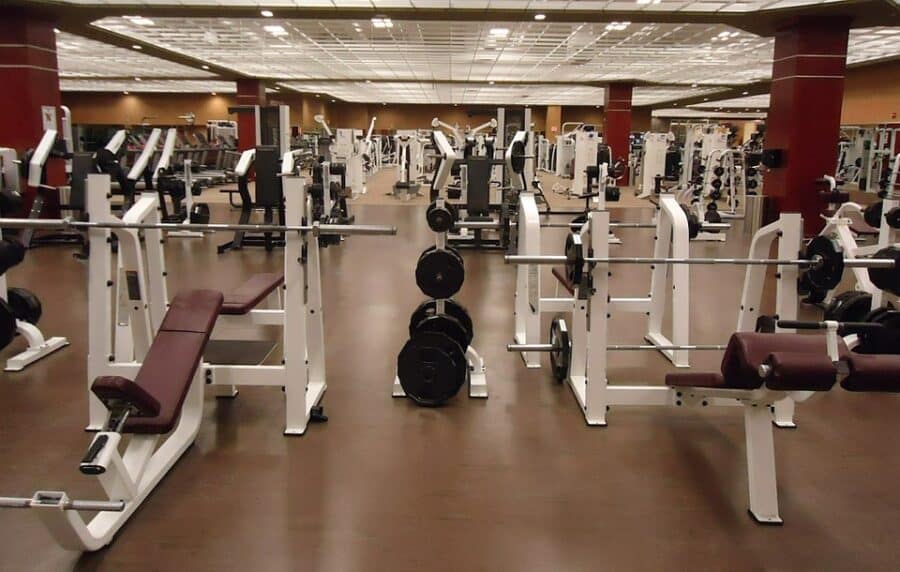The loss of strength is a common complaint among seniors. You’re not imagining it; muscle strength begins to decline as early as age 30 and, after age 60, the annual rate of decline reaches 3-5%. So, if you’re a senior adult, every single year you’re losing up to 5 percent of your strength. No wonder you can’t lift the way you used to!
Two words: resistance training
While aerobic exercise has many benefits for overall health, resistance training is the preferred exercise for specifically targeting the loss of muscle strength. Regular resistance training can delay or even reverse the generative loss of muscle mass and bone density, as well as joint dysfunction, that all contribute to the loss of strength. A study of exercise and physical activity in adults concludes, “Compared to age-matched AET (aerobic exercise training) athletes, RET (resistance-exercised training) athletes have more total muscle mass, higher bone mineral densities, and maintain higher muscle strength and power.”
Resistance training can be done with three types of resistance:
- Dead weights
- TheraBands (resistance bands)
- Your own body weight
While some resistance training at any level is better than none, research indicates that high-intensity resistance training and power training can be safe and most effective if you’re an active senior combating the decline in body functions normally associated with aging. According to a study published in the Journal of Geriatric Physical Therapy, a 60 percent threshold of maximum force for a single repetition is necessary to improve strength and function. A second study of senior adults found that those who worked their way up to 80-85 percent of maximum theoretical force during 12 weeks of resistance training achieved a 45 percent increase in isometric strength (force against a fixed object). For these subjects, gait analysis, or analysis of the manner of the client’s walk characterized by step length, velocity, rhythm and other factors, showed a significant increase (65%) in the length of the half-step, indicating a stronger, longer stride.
Physical therapy
A physical therapist is best qualified to assess appropriate exercises, loads and repetitions. “To determine the number of effective repetitions for any particular client, I watch for signs of deteriorating form or fatigue as the client performs designated exercises,” says Patrick Donovan, owner of Heather Lane Physical Therapy in Denver. “Typically, the number of successful repetitions will increase with continued training, and I’ll intensify the resistance or load as well.” A physical therapist also can introduce recovery interventions and use mechanical assessments to correct form, minimize injury, and control pain and muscle soreness.
Two approaches to resistance training are most common:
- High-intensity interval resistance training (HIIRT) involves bursts of different high-resistance training exercises interspersed with short rest intervals. HIIRT can be used safely by older athletes to not only combat muscle loss but to produce additional health benefits, including lowering cholesterol, low density lipoprotein (LDL) and triglyceride levels, which are indicators of heart disease.
- Brief, bone-targeted high-intensity progressive resistance training (HiPRT) with impact loading has been shown to improve bone density in postmenopausal women who start with bone mass in the low to very low ranges.

Power training
Power training adds a time element to simple strength training, reducing the time it takes for each repetition and thus increasing the power output. One study looked at the impact of power training on functional performance, determined by how long it took someone to complete gait and mobility tasks such as walking a set distance on level ground, doing the sit to stand motion and climbing stairs. This study found that after an appropriate conditioning phase, the explosive nature of quick reps in power training can result in more significant improvements in seniors’ functional ability.
In their White Paper on Strength Training for the Older Adult, Avers and Brown supported that assessment. “Adequate power is necessary to cross the street, to climb stairs, and to quickly rise from a chair,” the researchers wrote.
Why it matters
You don’t have to be a bodybuilder to have a reason to do power training or follow a lighter resistance training regimen. With falls continuing to be a major risk for senior adults, any effective strengthening program is recommended. The diminished ability to respond quickly to loss of balance, related to diminished power, has been implicated as a cause of falls. Since boosting power can help reduce falls, Avers and Brown concluded that power improvement is a necessary element of a strengthening program.
Citations:
Avers, D and Brown, M. (2009) White Paper: Strength Training for the Older Adult. Journal of Geriatric Physical Therapy. 32(4): 148-158.
Beaudin, Gilles. (2014, April 25; updated 2018, May 12) You don’t have to give in to aging: How strength training can make you younger. Retrieved from theglobeandmail.com.
Bellomoi, R.G. et. al. (2013) Muscle strength and balance training in sarcopenic elderly: a pilot study with randomized controlled trial. European Journal of Inflammation. 2(1):193-201. doi: 10.1177/1721727X1301100118
Chodzko-Zajko, W. et al. (2009) Position Stand: Exercise and Physical Activity for Older Adults. American College of Sports Medicine. 1510-1530. doi: 10.1249/MSS.0b013e3181a0c95c
Moro, T. et. al. (2017) High intensity interval resistance training (HIIRT) in older adults: Effects on body composition, strength, anabolic hormones and blood lipids. Experimental Gerontology. 98: 91–98. doi.org/10.1016/j.exger.2017.08.015
Rice, J, and Keogh, J.W.L. (2008) Power Training: Can it Improve Functional Performance in Older Adults? A Systematic Review. International Journal of Exercise Science. 2(2); 131-151. Available at: https://digitalcommons.wku.edu/ijes/vol2/iss2/6
Watson, S.L., et. al. (2015) Heavy resistance training is safe and improves bone, function, and stature in postmenopausal women with low to very low bone mass: novel early findings from the LIFTMOR trial. Osteoporosis International. 26(12): 2889-2894. doi.org/10.1007/s00198-
015-3263-2

